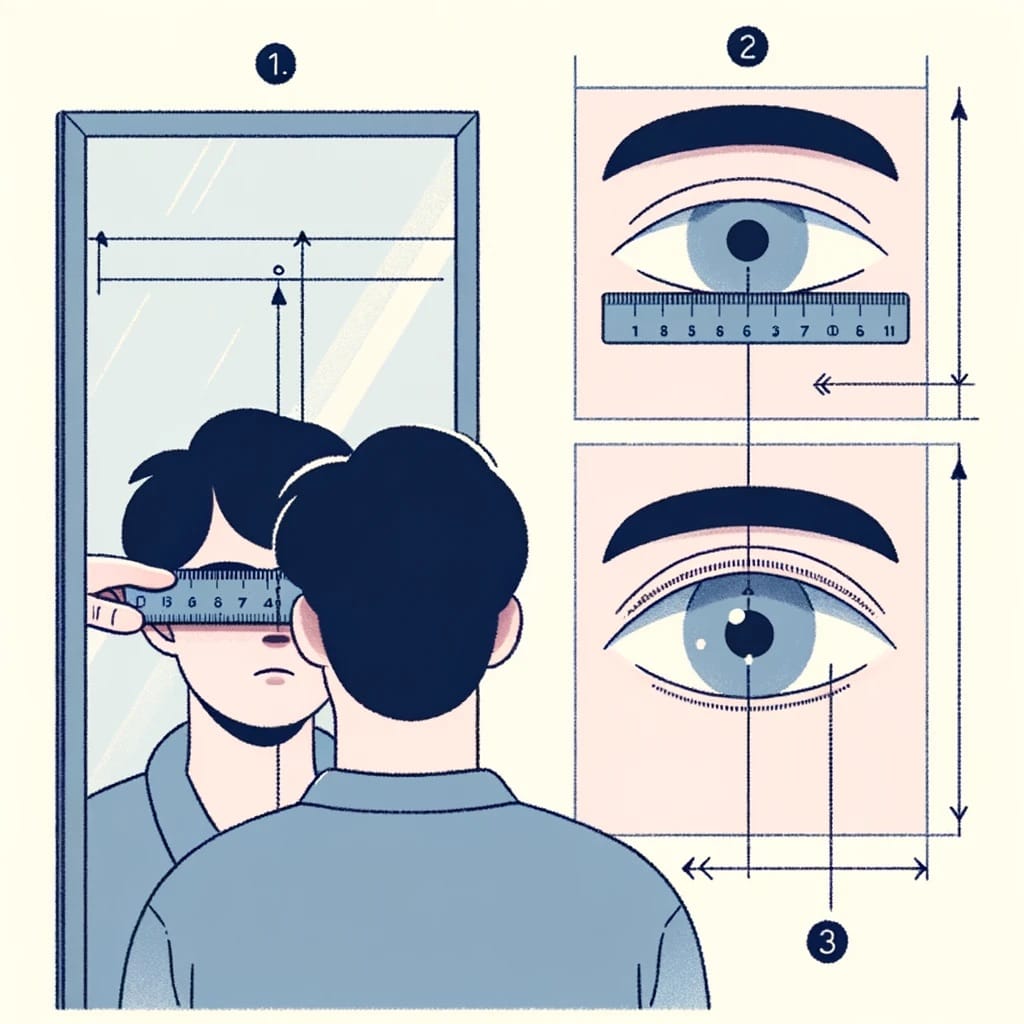When you pick up a pair of eyeglasses, you might notice a series of numbers printed on the inside of the frame. These numbers are more than just random figures; they provide crucial information about the size and fit of the glasses. Understanding these measurements can help you ensure that your glasses fit comfortably and look great. Here’s a breakdown of what each number signifies:
- Lens Width (Eye Size)
The first number, typically ranging from 40mm to 62mm, represents the lens width. This measurement indicates the horizontal width of one lens at its widest point. It’s essential for determining how much of your field of vision the lens will cover.
- Bridge Width
The second number, usually between 14mm and 24mm, is the bridge width. This is the distance between the lenses, the part that sits on your nose. A proper bridge fit ensures that the glasses sit comfortably and securely on your face without pinching or sliding.
- Temple Length (Arm Length)
The third number, often found after a small square or dash, denotes the temple length. This measurement, typically ranging from 120mm to 150mm, refers to the length of the arm pieces of the frame from the hinge to the tip. Proper temple length ensures that the arms of the glasses comfortably reach behind your ears.
- Lens Height (B Lens)
Some frames, especially for bifocals or progressive lenses, include a lens height measurement. This vertical measurement of the lens at its tallest point is critical for ensuring that multifocal lenses are positioned correctly.
- Frame Width
Although not always printed on the frames, the overall frame width can be calculated by adding the lens width, bridge width, and temple length. This total width is essential for determining how the glasses will fit your face overall.
Why These Measurements Matter
Fit and Comfort
Properly fitting glasses are crucial for comfort. If the frames are too tight, they can cause discomfort or headaches. If they are too loose, they can slip down your nose. You can use our free home trial service to make sure you select a well fitting frame before purchasing.
Optical Precision
For multifocal or progressive lenses, correct measurements ensure that the different focal areas of the lenses are aligned properly with your eyes. This alignment is essential for clear vision at all distances. If you have a strong prescription, we may also ask you for your pupil distance measurement.
Aesthetic Appeal
Frames that fit well enhance your appearance. The right size ensures that the glasses complement your face shape and proportions.
How to Measure Your Frame Size
- Existing Glasses: Use the measurements from a current pair of glasses that fit well.
- Professional Fitting: Visit an optician who can measure your face and recommend frames that will fit perfectly. We can also send over some information on how to adjust your glasses at home.
- DIY Method: Measure your face using a ruler or tape measure and compare the measurements to frame size guides available online.
Conclusion
Understanding the measurements printed on your eyeglass frames is essential for finding a pair that fits well, feels comfortable, and suits your style. These numbers ensure that your glasses provide the best possible vision and comfort. Next time you shop for glasses, keep an eye out for these measurements to make an informed choice.

 Top 5 Eyecare Tips For Prolonged Screen Use
Top 5 Eyecare Tips For Prolonged Screen Use Do I Need An Eye Test?
Do I Need An Eye Test? Why Reglazing Your Existing Glasses May Work For You!
Why Reglazing Your Existing Glasses May Work For You!